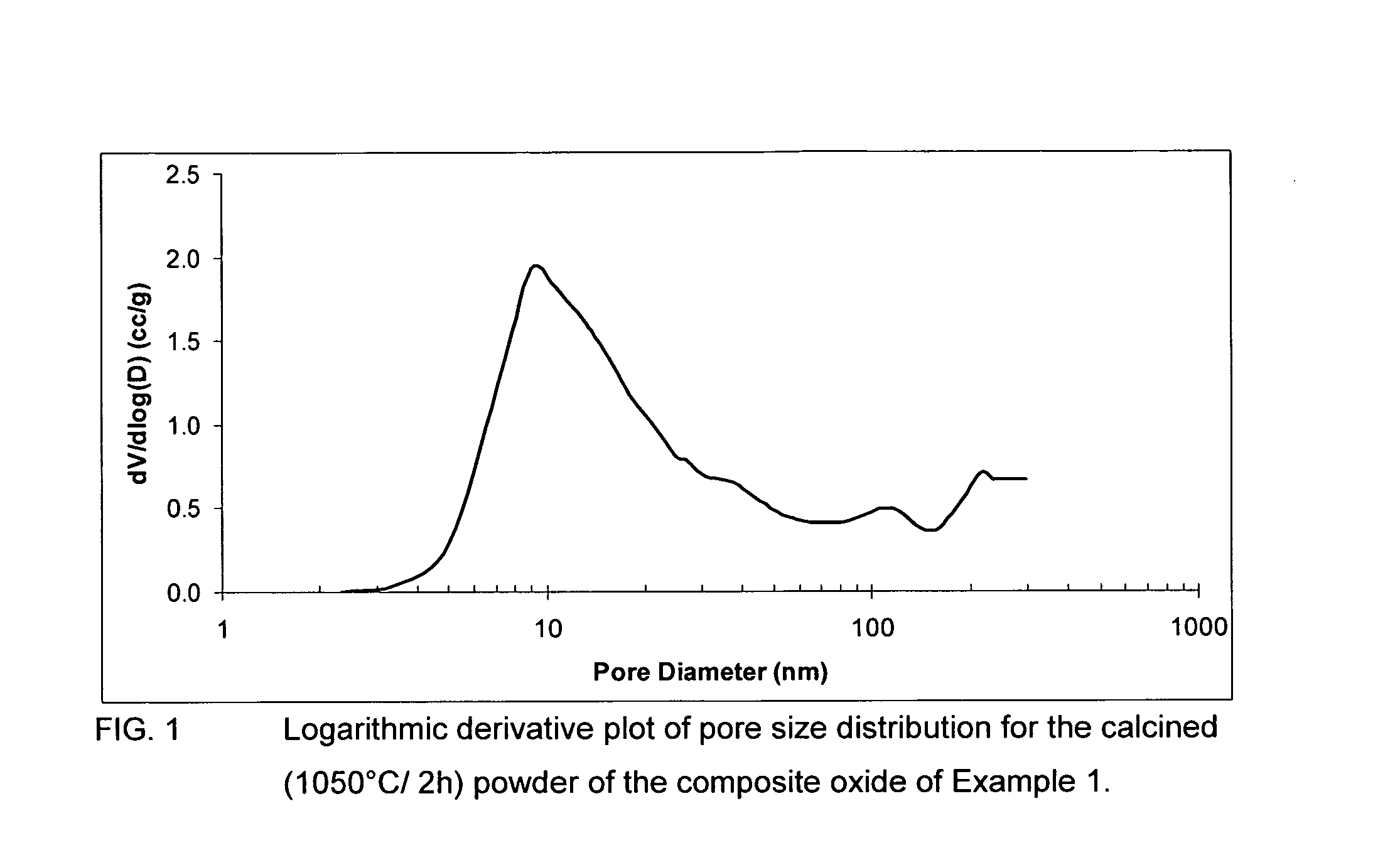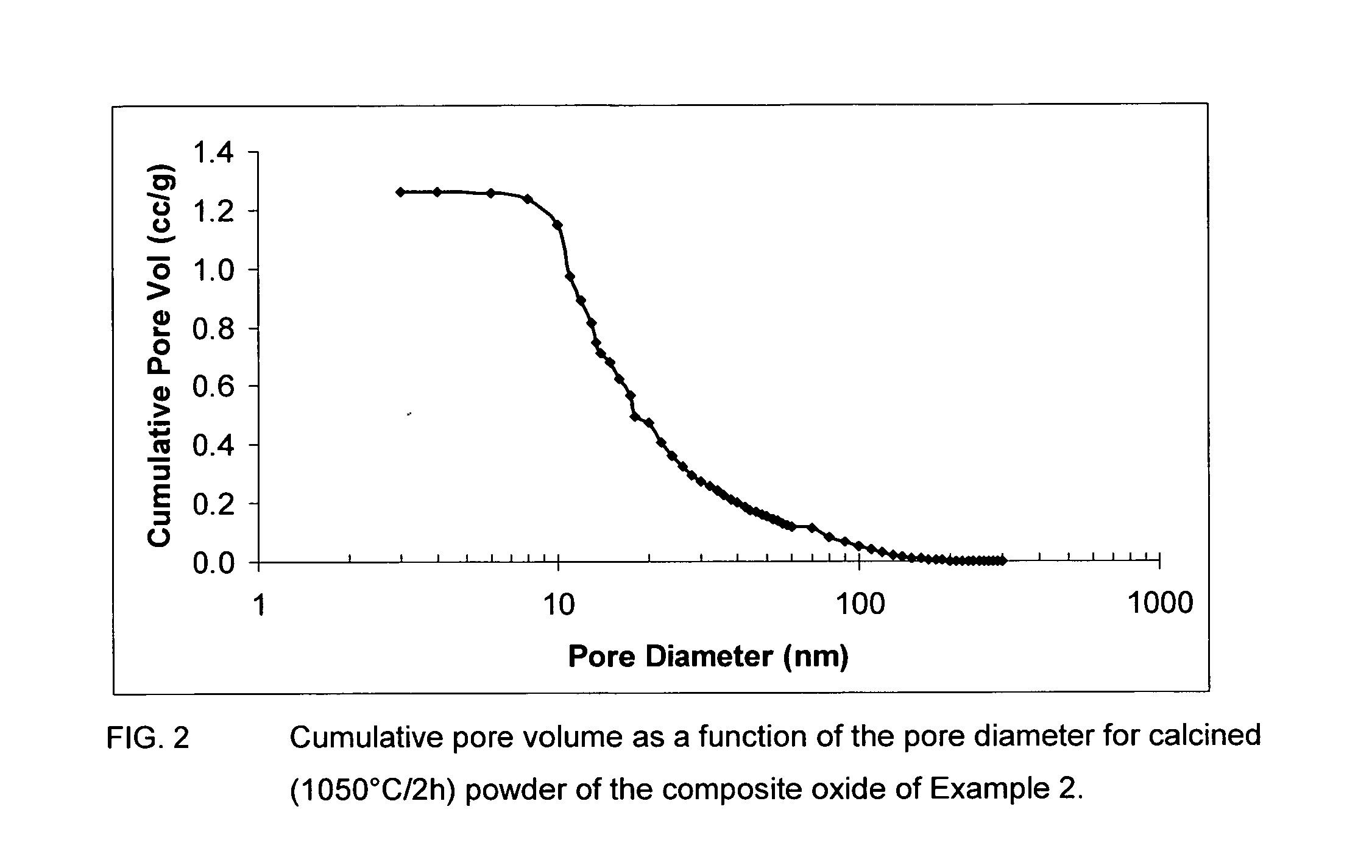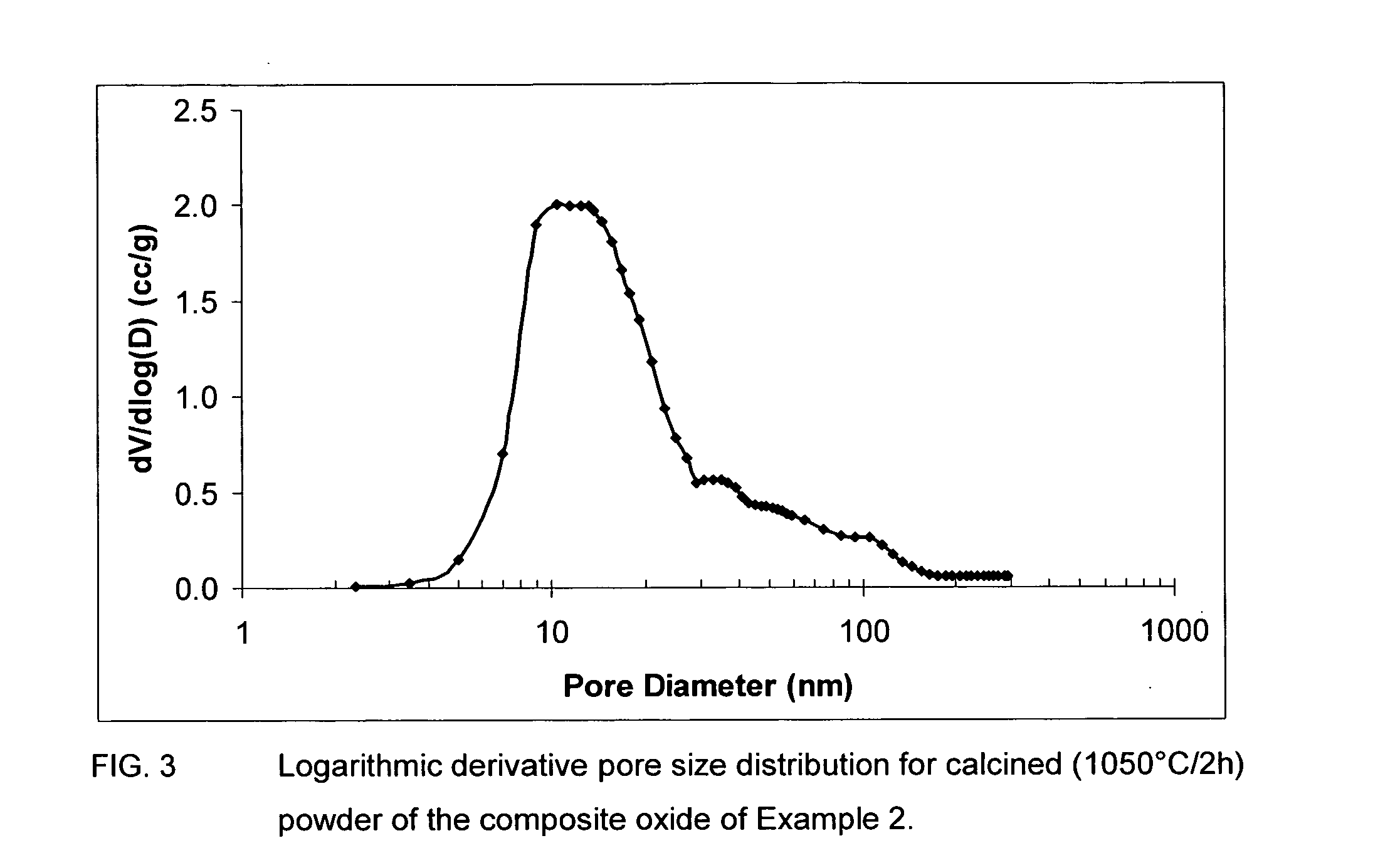Sulfur tolerant alumina catalyst support
a technology of alumina and catalyst, applied in the direction of catalyst activation/preparation, metal/metal-oxide/metal-hydroxide catalyst, etc., can solve the problems of reducing the catalytic effectiveness and life of internal combustion engines, reducing the activity of sulfur alumina, and reducing the ability to store sulfate, etc., to achieve enhanced treatment activity, good resistance to sulfur poisoning, and simple structure
- Summary
- Abstract
- Description
- Claims
- Application Information
AI Technical Summary
Benefits of technology
Problems solved by technology
Method used
Image
Examples
example 3
[0097]The composite oxide of Example 3 comprising, on the basis of 100 pbw of the composite oxide, 65 pbw Al2O3, 20 pbw SiO2 and 15 pbw ZrO2 was made as in Example 2, except that zirconium nitrate (concentration 21.3%, density 1.306) was mixed with aluminum sulfate solution prior to precipitation. The spray dried powder exhibited a surface area of 459 m2 / g. The spray dried powder was calcined at 900° C. for 2 hour and 1050° C. for 2 hours. Results of surface area, pore volume are reported in TABLE VII below. Specific Surface Areas (“SA”), expressed in square meters per gram (“m2 / g”)), Pore Volume (expressed in cubic centimeters per gram (“cm3 / g”)) and Average Pore Diameter (expressed in nanometers (“nm”)) were measured and are reported in TABLE VII below for each of the two calcination temperatures (expressed in degrees Centigrade (“° C.”)) and time (expressed in hours (“h”)).
TABLE VIICalcinationSAPore volumeAverage poreTemperature / time(m2 / g)(cm3 / g)diameter (nm) 900° C. / 2 h2941.1711...
example 4
[0101]The composite oxide of Example 4 comprising, on the basis of 100 pbw of the composite oxide, 69 pbw Al2O3, 16 pbw SiO2 and 13 pbw TiO2 was made as in Example 2, except that titanyl orthosulfate (concentration 9.34%, density 1.376) was mixed with aluminum sulfate solution prior to precipitation. The spray dried powder exhibited a surface area of 488 m2 / g. The spray dried powder was calcined at 750° C. for 2 hour and 900° C. for 2 hour. Samples of the powder that had been calcined at 750° C. / 2 h were then calcined at 1100° C. for 5 hours, at 1200° C. for 5 hours, and at 1050° C. for 2 hours. Results of surface area (in square meters per gram (“m2 / g”)) and pore volume (in cubic centimeters per gram (“cm3 / g”)), and average pore diameter (in nanometers (“nm”)) determinations are reported in TABLE IX below for each of the different calcination conditions.
TABLE IXCalcinationSAPore volumeAverage poreTemperature / time(m2 / g)(cm3 / g)diameter (nm) 750° C. / 2 h3931.259 900° C. / 2 h3201.1710.01...
PUM
| Property | Measurement | Unit |
|---|---|---|
| Temperature | aaaaa | aaaaa |
| Temperature | aaaaa | aaaaa |
| Temperature | aaaaa | aaaaa |
Abstract
Description
Claims
Application Information
 Login to View More
Login to View More - R&D
- Intellectual Property
- Life Sciences
- Materials
- Tech Scout
- Unparalleled Data Quality
- Higher Quality Content
- 60% Fewer Hallucinations
Browse by: Latest US Patents, China's latest patents, Technical Efficacy Thesaurus, Application Domain, Technology Topic, Popular Technical Reports.
© 2025 PatSnap. All rights reserved.Legal|Privacy policy|Modern Slavery Act Transparency Statement|Sitemap|About US| Contact US: help@patsnap.com



